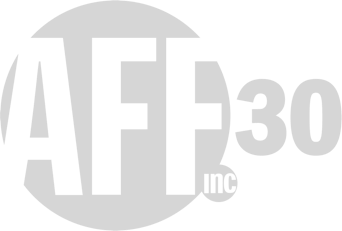Safi Faye: Selbé et tant d’autres
Selbé et tant d’autres (Selbé: One Among Many; 1982) by Safi Faye (born 1943) begins how it ends. It is carried by song in a cycle that does not allow rest. In the documentary film’s first two minutes, we are introduced to Selbé, a thirty-nine-year-old mother of eight from Fad’jal, the filmmaker’s native Serer village in southern Senegal. We hear her doleful song, with a repeating lyric in Serer, “There is no respite for the unfortunate ones.” Her voice guides us throughout the thirty minutes of the film, as she sings at irregular intervals to accompany her labor. The lyrics reflect the film’s visual portrayal of her and other women at work and in constant motion in the absence of their husbands, who have migrated to the nearest cities in search of work.
Safi Faye is no stranger to Fad’jal, having spent her youth and young adulthood there before she moved to Dakar to become a schoolteacher. In 1966, she met anthropologist-filmmaker Jean Rouch (1917–2004) at the First World Festival of Negro Arts and, soon after, took a leading role in his film Petit à petit (Little by Little; 1971). A year later, in 1972, she moved to Paris to pursue an interdisciplinary education in anthropology at the Sorbonne and filmmaking at the Ecole nationale supérieure Louis Lumière. Faye’s approach to ethnographic documentary film differed from Rouch’s as they entered the communities they were filming from opposing standpoints. While Rouch’s perspective is that of an outside observer, Safi’s is from within. Safi explains, “I have underscored the rural problem in every way. I have been unrelenting because I am from the peasantry; I am not from the city.”1 On the contrary, Rouch arrives to the work solely as an observer. Faye’s emphasis on her background is the foundation of her approach, prompting her to occasionally participate in the form of a voice-over, building the larger narrative,2 and attenuating the distance between her and her collaborators that is often primary in ethnographic film practices. Faye films the community she is a part of, employing an “observational mode to show inaccessibility,” and serving as the mediator between the viewer and the people she films.3 This kind of double vision ensures that she can serve “as both participant and observer.”4 Following her participation in Petit à petit, Faye shot her first film, a ten-minute short titled La Passante (The Passerby; 1972), in Paris. She later returned to her rural hometown to create her first feature-length film, the black-and-white Kaddu Beykat (Letter from My Village; 1975), making her the first woman from sub-Saharan Africa to direct a commercially distributed feature film. This project was followed by Fad’jal; Goob na ñu (The Harvest Is In; 1979), the second in her growing collection of intimate films merging documentary and fiction through interviews and slow captures focusing on everyday activities in rural communities. Selbé et tant d’autres (Selbé: One Among Many; 1982) follows in this practice, using documentary film as a tool for ethnographic study and pushing a new interactive form of documentary film that centers the voice of women living in rural communities.
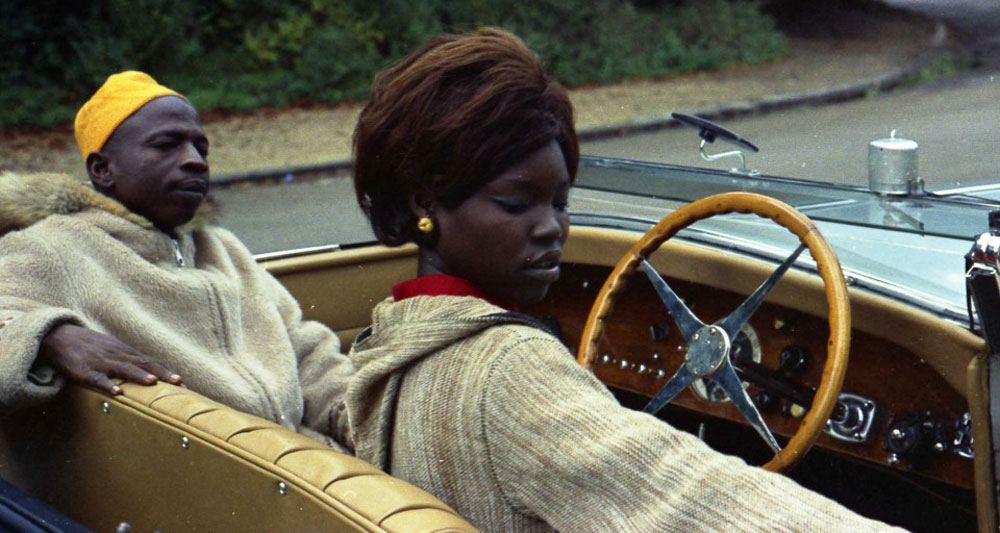
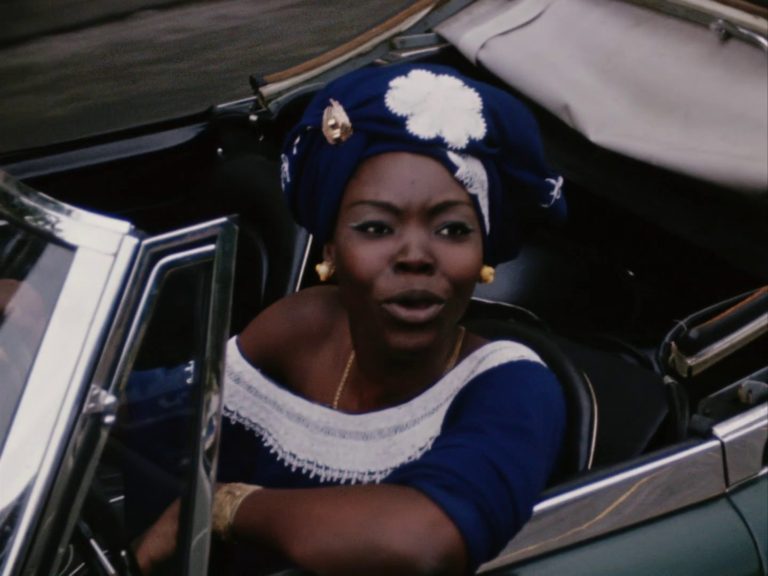
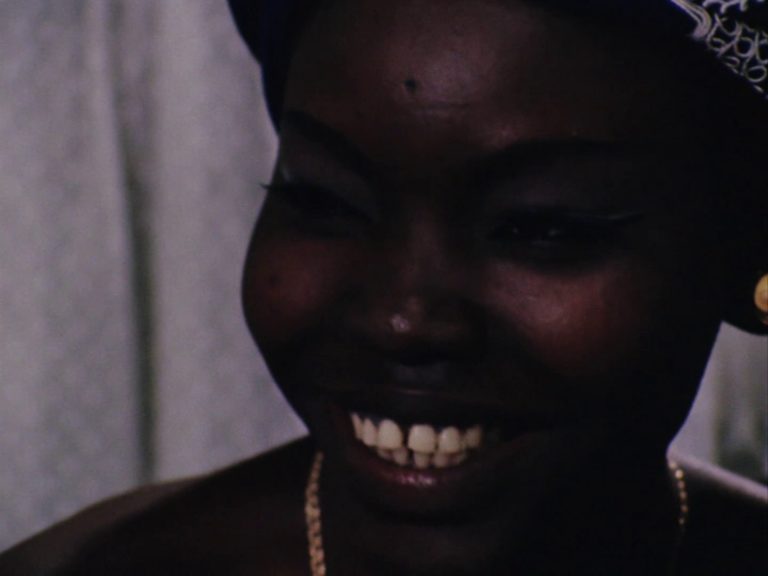
Cinema by Francophone Africans was born alongside the independence movements of the 1960s.5 Filmmakers like Djibril Diop Mambéty (1945–1998), Ousmane Sembène (1923–2007), Mahama Johnson Traoré (1942–2010), and their peers in Mali, Souleymane Cissé (born 1940) and Abderrahmane Sissako (born 1961) to name a few, used the camera to challenge the existing stereotypical representations of their experiences, a practice evident in Safi Faye’s corpus. For Faye and her peers, cinema presented the opportunity to counter the ingrained colonial narratives of African societies due to its possibility for widespread distribution. Unfortunately, many of these films remain inaccessible to cinemas on the continent, ultimately beyond the reach of African audiences despite a collective desire to revisit these narratives. Selbé et tant d’autres is no exception.6 Because such films are not more publicly accessible, the stories they convey do not remain in Senegalese cultural memory.
In Selbé et tant d’autres, we hear the voice of Faye, who is away from the lens as she interviews Selbé—speaking to the interactive documentary’s collaborative and nonhierarchical approach. This decision to center Selbé’s voice “contrasts radically with the silence and/or absence of African women characters in Western images of the continent.”7 Despite this focus, Faye has rejected the interpretation that her films are solely about placing women at the center of her stories. As she explains, “Women alone cannot live in Africa. Women live in a community, and I cannot eliminate the community.”8 Her commitment is to narratives that are most prevalent outside the city, and to characters who address both local concerns and the larger agricultural and economic policies that are contributing to their difficulties. As we watch Selbé and the other women work, we are drawn back to the title, “Among Others,” a reminder that Selbé’s story can be applied to other women who share her background.

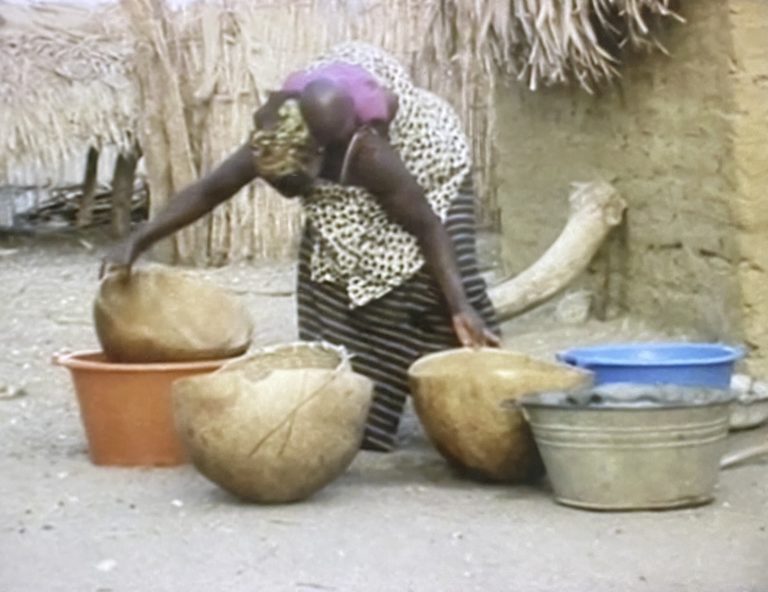
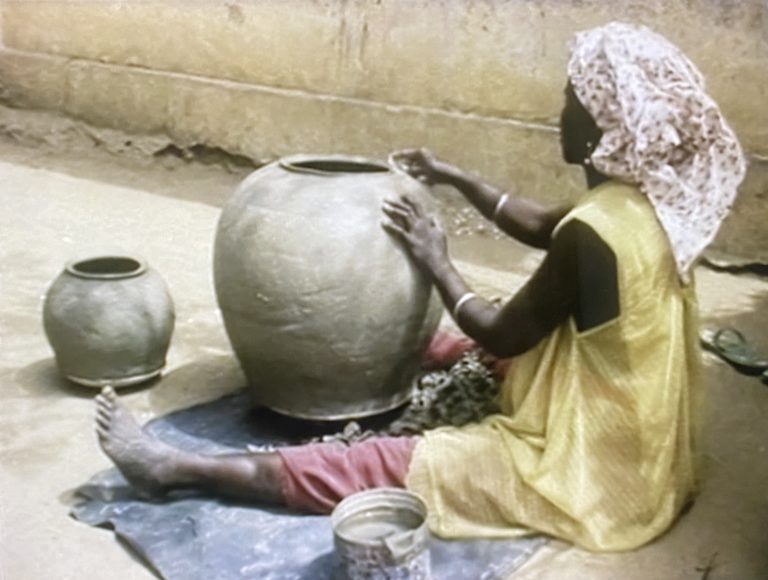

From the onset of the film, Faye’s camera, relying on both sonic and visual repetition, follows Selbé and other women from the village as they go about their daily routines without pause. Her camera is static, often at a distance, in order to get a full frame of the subjects and their environment. The women are fishing, collecting salt, preparing meals, unloading wood, breastfeeding, making clay pots, in transit from one place to another—never at rest. It is unclear if these are all the chores undertaken in one day, or a compilation of what’s accomplished over various afternoons. When Faye gets close to her collaborators, she focuses on the repetitive details of their labor, on their hands in continuous action, on their routine gestures. These moments are at times accompanied by Selbé’s singing, “There is no respite for the unfortunate ones.” In one repeating scene, Selbé sits in a domestic setting, breastfeeding her child, as she prepares a meal. Faye frequently returns to this scene with minor variations, often with Selbé surrounded by and engaging with her children. The repetition of this portrait throughout the film serves as a reminder of the cyclical, crucial, and multitasking labor that Selbé takes on.
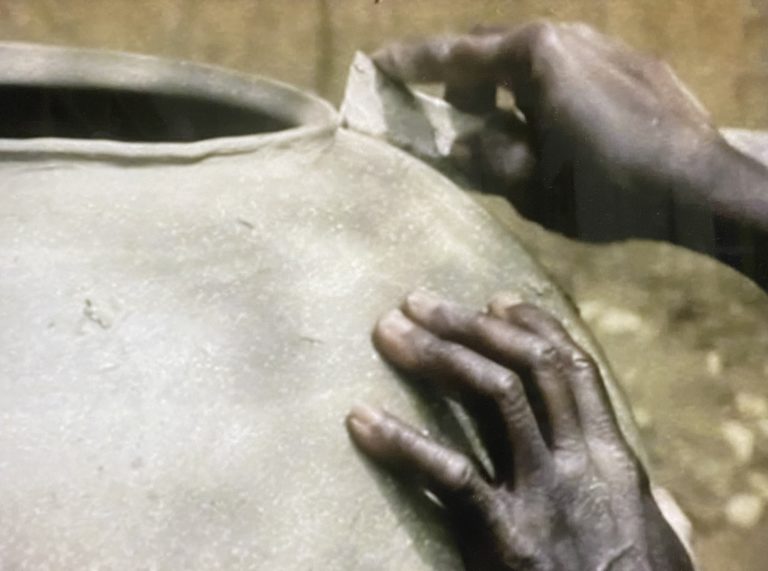
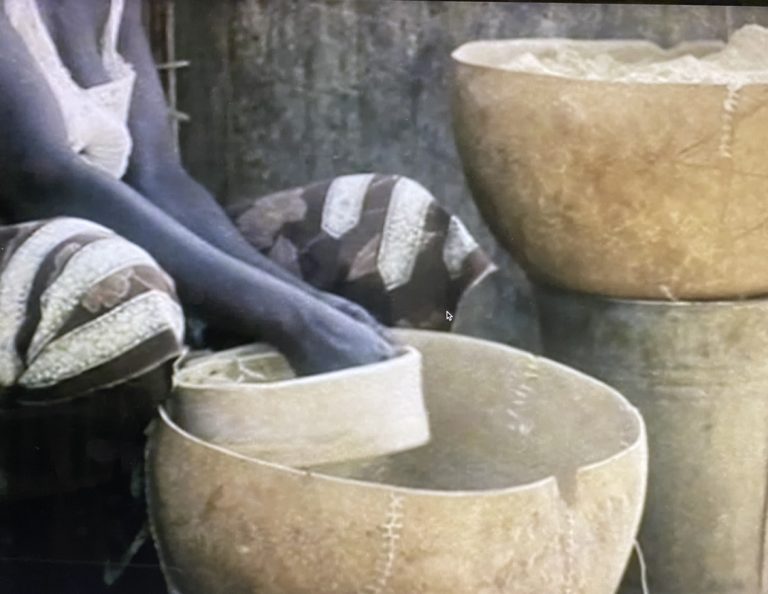
As the narrative unfolds, we learn of the pivotal and unconventional roles women have taken on to support their families. A woman other than Selbé stands, refusing to be silent or passive as she directly addresses her husband, explaining the issues affecting their domestic life. Faye’s camera remains distant as this woman unloads wood, a job she expects her husband to help with. She continues the work alone, airing her frustrations as he sits and watches. Faye then leads us back to Selbé, who is engaged in yet another chore. Selbé tells us about having left home for eight months to work as a launderer in Dakar. In her absence, her own mother cared for three of Selbé’s children. Selbé returned to village gossip that she was in the city to meet men, which she immediately dismisses as “nothing but gossip and lies.” This example directly ties back to Selbé’s song, “There is no respite for the unfortunate ones.” Selbé has gone to another village in search of opportunities. Faye presents us with women who, in her words, “are in charge of their own destiny. And rely on their own strength.”9 They take initiative, maintain supportive relationships with one another, and are creative in collecting and maintaining resources.
In one of the most extended takes in the film, Faye’s camera turns to the men of the village, who are gathered by the beating of a drum. We are given a wide view of the group, emphasizing their multitude. As the men discuss taxes, Faye maintains her camera’s perspective, occasionally honing in on a few faces. One of the leading characters notes that if the men cannot pay, “the taxman” will arrive to collect their belongings and sell them until the debts are paid.10 He clarifies that although they have received fertilizer and seeds from the government, the taxes remain due. This scene connects directly to one of Faye’s earlier voice-overs, in which she reveals, “There’s no agricultural work for the men in the countryside.” Selbé later corroborates this statement. She explains that she has not seen anything from her husband besides his yearly harvest, noting it “barely feeds us for a month. It doesn’t rain enough.”
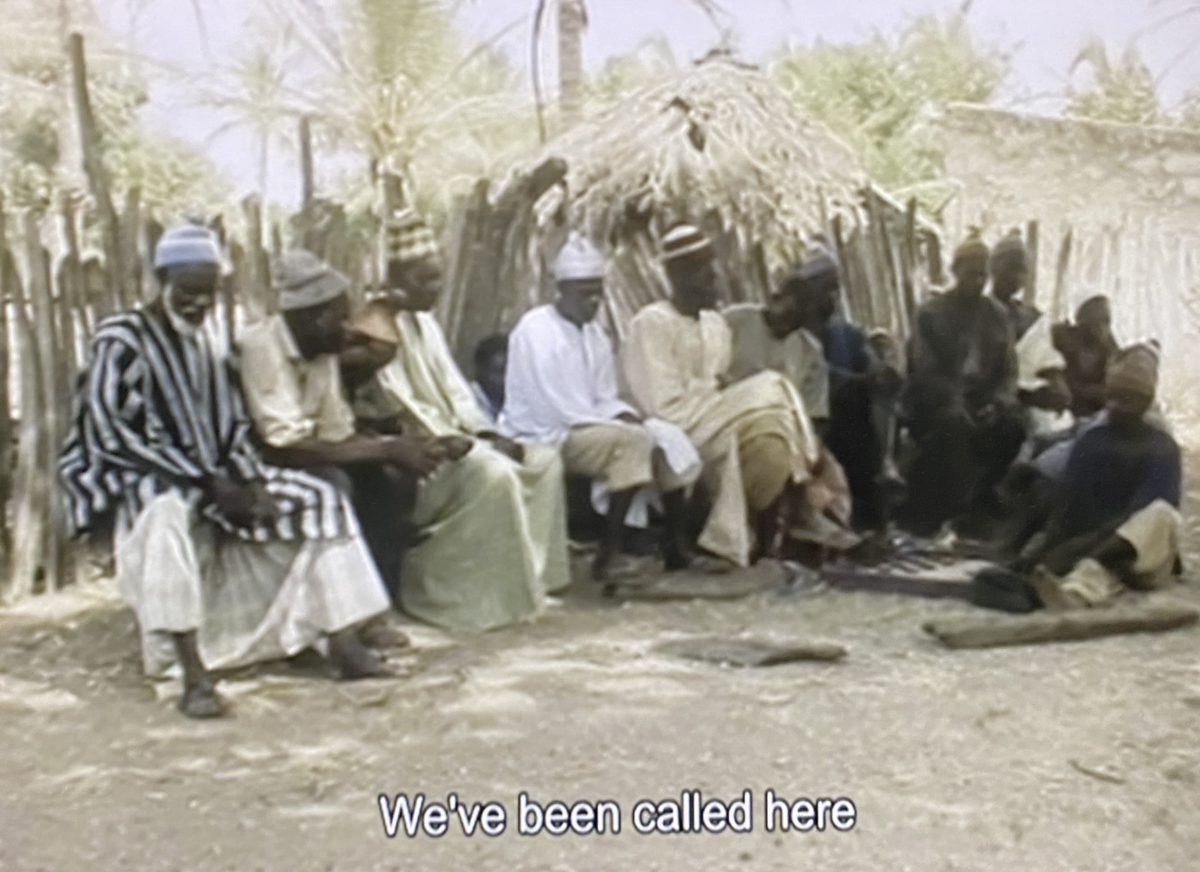
While Faye acknowledges the internal conflicts that affect the village, she also points directly to the external threats—as in her 1975 film Kaddu Beykat (Letter from My Village), in which village members speak extensively about the government oversight that has resulted in the conditions they face. In addition to Selbé sharing her frustration with her husband, Faye’s voice-over adds, “Economic tragedies, droughts, hunger, unemployment, and tomorrow’s insecurities all extend into family dramas, affecting both men and women.” Faye draws a connection between the established government policies and colonial farming methods and the poverty and limited employment opportunities faced by those living in rural communities. Although addressed more explicitly in Kaddu Beykat, the ongoing policies and isolation of rural villages reinforce the disconnect in applying laws that ensure the rural community’s well-being.

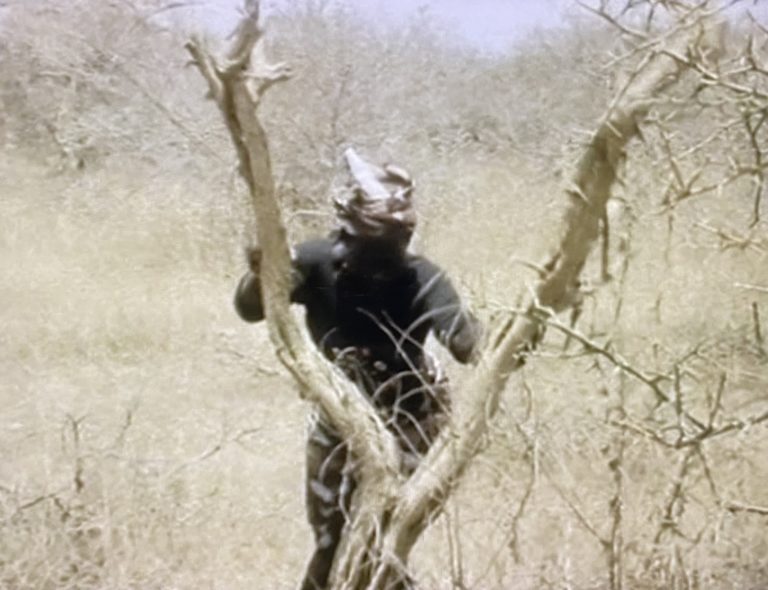
Toward the film’s end, Selbé continues, “Farm until exhaustion. God, why have you chosen this for me? Find a future for our children.” Selbé et tant d’autres ends with Selbé clearing the fields in case of rain, another task that her husband has neglected to do. At first, she is joined by two other characters, but eventually she is standing alone, her body moving swiftly. As the credits begin, Faye’s camera stays with Selbé at work—without offering clarity on when this work will end. Through this film that centers Selbé’s voice, Faye allows us, the audience, to keep a record of her subject’s life and the nature of women’s work in the village of Fad’jal. Over thirty minutes, Selbé’s voice carries us from the beginning to the end, through intimate observation of one woman’s seemingly endless chores. We learn of her social role and economic burden as she sustains her family. Safi Faye and Selbé allow us a look into their community, drawing attention to the local issues that fester, while also alluding to the broader governmental structures that exacerbate the problems. Faye’s corpus is defined by its unique ethnographic excavation of her home, and Selbé et tant d’autres is no exception.
This article originally appeared on post – notes on art in a global context – MoMA: https://post.moma.org/safi-faye-selbe-et-tant-dautres/
About the Author
Nene Aïssatou Diallo
Nene Aïssatou Diallo is an arts administrator and artist working in photography, video, textiles, and collage. Her work is rooted in resisting legacies of erasure and in memories and imaginations of home. In 2018, she co-founded LAND Collective, a community of Newark-based and affiliated artists and cultural producers who collaborate on exhibitions, publications, and programs locally and digitally. Diallo majored in Visual Media & Arts Practices and a B.A. in Women, Gender, & Sexualities Studies from the University of Richmond. She also attended The Interdisciplinary Art and Theory Program in New York. She has exhibited nationally and has had residencies at the Vermont Studio Center, Index Art Center, Gallery Aferro, Project for Empty Space, The Residency Project, and Stoneleaf Retreat. Diallo’s work has been featured by Format, Monument Lab Bulletin, NPR, RVA Magazine, The Financial Times, and most recently, the 13th edition of the Bamako Encounters – African Biennale of Photography. Learn More

